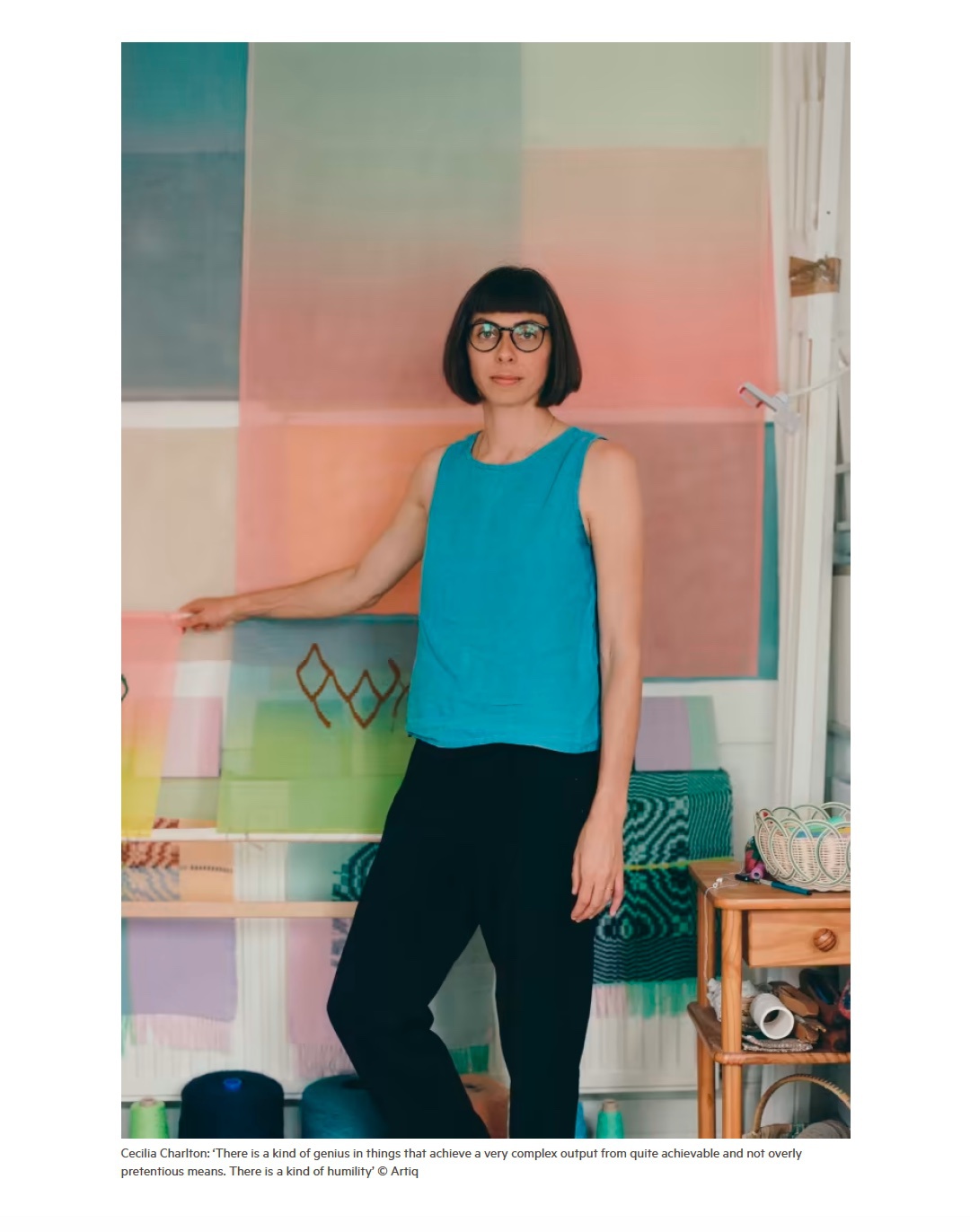For thousands of years, stitchers have understood the beauty, power and significance of embroidery. More recently, museum curators and gallery directors have also begun to recognise its cultural value. With ceramics firmly established as a serious art discipline, and textiles more generally championed by institutions such as Tate and the Royal Academy over the past few years, it seems embroidery, too, is now finally having its moment. Partly this is owing to the exceptional quality of contemporary work, which has built on the medium’s long, rich history. Discovering bargello embroidery, a form of vertical stitching dating back to Renaissance Florence, broke through the creative brick wall that London-based American artist Cecilia Charlton found herself facing during the first year of her painting programme at the Royal College of Art in 2016. It allows, for the mathematically minded, the creation of an extraordinary range of highly controlled but soft and modulated curving forms, which lent itself well to the geometric compositions she was already exploring through her paintings. The decorative technique has since become the foundation for much of her work, even leading her to learn to weave. With sewing also a part of her practice, it is not just the patterns but the action itself that inspires her: “Embroidery, with its repeated patterns, functions in some ways like a walking meditation or mantra. [It’s a] physical activity. Maybe not just in the aesthetics of pattern but in the execution of pattern,” she says. “There is a kind of genius in things that achieve a very complex output from quite achievable and not overly pretentious means. There is a kind of humility.”


While embroidery may not have always been so esteemed — the Royal Academy explicitly banned “needlework” from its exhibitions in 1770 — that has not stopped generations of artists from ambitiously pushing the boundaries of the medium. Textile artist Alice Kettle is one of those leading figures. Winner of this year’s Brookfield Properties Craft Award, some of her impressive large-scale narrative embroideries are now on show at Brookfield’s London premises (To Boldly Sew: Textile Art by Alice Kettle, until September 29). These include a piece from the moving “Schiffli” series, “Ormo” (2006), where three figures shimmer out of a densely embroidered background. It is one of three huge works that utilised the multi-needle schiffli embroidery machine at Manchester School of Art, where she teaches. Also on display is “Sea” (2018), with its elusive figures lost in a turbulent blue, one of a triptych of monumental canvases honouring migrants and migration, titled “Thread Bearing Witness”.
Kettle trained as a painter, but the tragic early death of her mother, just as Kettle was going to art school, threw her into turmoil. After finishing her undergraduate degree, she chose to study at Goldsmiths, enrolling in the fine art textile course run by Audrey Walker, herself an artist renowned for figurative embroideries built up from layers of differently coloured thread. Here Kettle became aware of an entire canon of British embroidery, reaching back to the Bayeux Tapestry and the much celebrated, densely stitched medieval Opus Anglicanum, traditions built on by ambitious 20th-century textile artists including Ann Macbeth, Constance Howard and Christine Risley. At Goldsmiths, Kettle developed her particular technique of using a sewing machine with an “embroidery foot” attachment, to allow for freestyle stitching. The scale of her pieces Kettle ascribes to her painting background: “I was thinking about composition and subject before I knew how to stitch, and that, I think, has been defining in everything I have done, both at the level of image making and in the scale at which I work.” But embroidery offered a more congenial medium in which to explore these things. “Embroidery has this intimacy to it. You can do it in your own space,” Kettle says. “It has a generative quality to it, and I think that rhythmic, repetitive nature of it is really healing. You invest labour, and it takes time.”
Another beauty of embroidery, she explains, is that “you are always doing two things at the same time. You are drawing, a perfectly descriptive, linear, illustrative line, but it is three dimensional.” The surface changes constantly under different lights, she says. “It is full of surprises all the time.” At the newly opened show Threads: Breathing Stories into Materials at Bristol’s Arnolfini (until October 1), “Ground”, a sister work to “Sea”, extends across an entire wall. Celebrating the fact that textiles, and the patterns and materials that constitute them, migrate, Kettle explains that “refugees in Greece, France and UK . . . shared drawings which I embroidered like a narrator — to make our common ground”.


